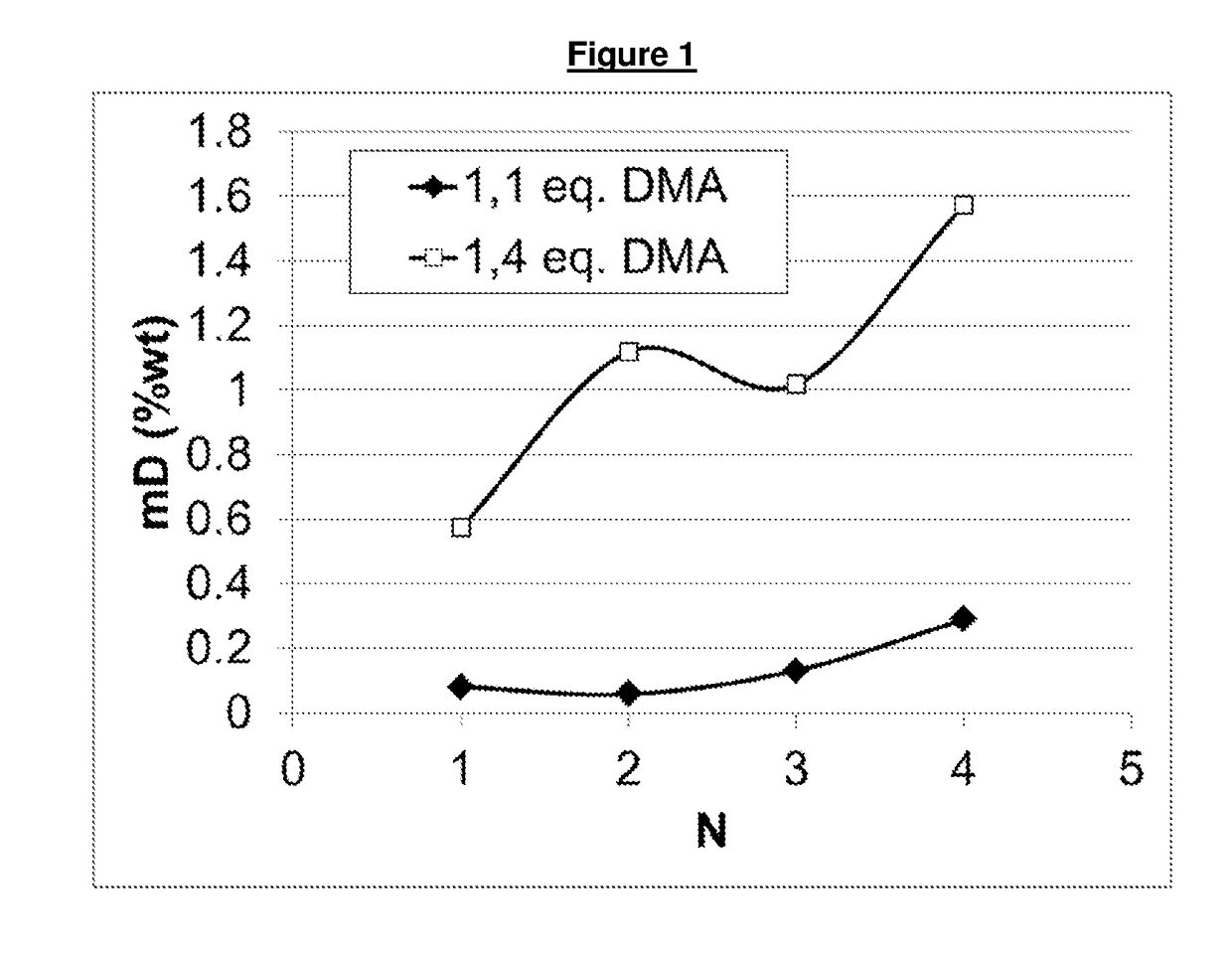Process for the reductive amination of halogen-containing substrates
a technology of halogen-containing substrates and amination processes, which is applied in the field of reductive amination of halogen-containing substrates, can solve the problems of reducing the activity and selectivity of catalysts, and achieve the effects of reducing the risk of operational problems, reducing the need, and intensive cleaning of products
- Summary
- Abstract
- Description
- Claims
- Application Information
AI Technical Summary
Benefits of technology
Problems solved by technology
Method used
Image
Examples
example 1
on of the Pd / Cu on Carbon Catalyst
[0144]A catalyst comprising 3% wt Pd and 7% wt Cu on carbon, was prepared by slurrying a 3% wt Pd / C catalyst in demineralised water. Then, an appropriate amount of CuCl2 aqueous solution was added to the slurry. Subsequently, aqueous NaHCO3 was added until the pH reached 7-7.2. The resulting slurry was then heated, and a chemical reduction was performed by means of adding sodium formate. During this procedure, gas was released from the slurry and the temperature was further increased to 95° C. Then, the slurry was cooled, decanted or filtered, and washed with fresh demineralised water. Prior to use in the experiments the catalyst was reduced at 180° C. under hydrogen at 10 barg hydrogen for 1 hour.
example 2a
Amination of 2-chloro-benzaldehyde with Dimethylamine to Produce 2-Cl-BDMA on a Small Scale
[0145]A 300 mL autoclave (Parr) was charged with 90 g of 2-chloro-benzaldehyde (industrial grade), 27 g of methanol (industrial grade) and 0.17 g of a catalyst containing, based on dry weight, 3% wt palladium and 7% wt copper on carbon, which had been produced as described in Example 1. The reactor was sealed and the gas phase was flushed three times with nitrogen. Then, an appropriate amount of dimethyl amine was added to the reaction mixture, causing the temperature to increase to about 55° C. in about 5 minutes. Hydrogen was added to a final pressure of 70 barg and the reactor was further heated during about 10 minutes to a reaction temperature of 100° C. and continuously stirred at 500 rpm. The hydrogenation reaction was allowed to proceed for another 2 hours at 100° C. Then, the reactor was cooled down and degassed at room temperature. The catalyst was subsequently filtered off and a samp...
example 2b
Amination of 2-chloro-benzaldehyde with Dimethylamine Over a PdAg / AC Catalyst to Produce 2-Cl-BDMA on a Small Scale
[0148]A 300 mL autoclave (Parr) was charged with 90 g of 2-chloro-benzaldehyde (industrial grade), 30 g of methanol (industrial grade) and 0.27 g of a catalyst containing, based on dry weight, 3% wt palladium and 3% wt silver on carbon. The reactor was sealed and the gas phase was flushed three times with nitrogen. Then, an appropriate amount of dimethyl amine was added to the reaction mixture, causing the temperature to increase to about 55° C. in about 5 minutes. Hydrogen was added to a final pressure of 70 barg and the reactor was further heated during about 10 minutes to a reaction temperature of 100° C. and continuously stirred at 500 rpm. The reaction mixture was evacuated from the closed reaction vessel over a filter leaving the catalyst in the vessel. A sample was taken from the reaction product (i.e. filtrate) and analysed by GC. The reactor was filled again wi...
PUM
| Property | Measurement | Unit |
|---|---|---|
| Temperature | aaaaa | aaaaa |
| Temperature | aaaaa | aaaaa |
| Fraction | aaaaa | aaaaa |
Abstract
Description
Claims
Application Information
 Login to View More
Login to View More - R&D
- Intellectual Property
- Life Sciences
- Materials
- Tech Scout
- Unparalleled Data Quality
- Higher Quality Content
- 60% Fewer Hallucinations
Browse by: Latest US Patents, China's latest patents, Technical Efficacy Thesaurus, Application Domain, Technology Topic, Popular Technical Reports.
© 2025 PatSnap. All rights reserved.Legal|Privacy policy|Modern Slavery Act Transparency Statement|Sitemap|About US| Contact US: help@patsnap.com


